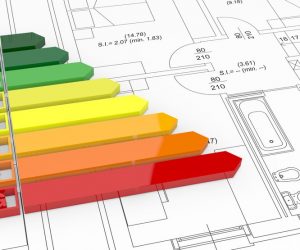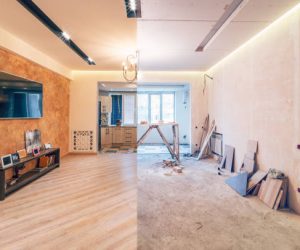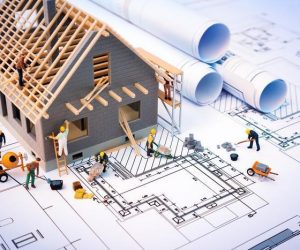Vancouver’s Energy Choices: Gas vs. Electric Heating in the Latest Building By-Laws

Vancouver is once again taking bold steps towards a sustainable and energy-efficient future, with new amendments to the city’s building by-law that will significantly impact new construction projects. These changes come at a critical time as the city balances its climate goals with housing affordability and energy resilience. The amendments introduce two pathways for compliance: one focusing on zero-carbon buildings and the other allowing the use of natural gas for heating and hot water. Here’s what these amendments mean for the city’s future and what they could mean for your next construction project.
Introducing Two Compliance Paths: Path 1 and Path 2
In response to the increasing demand for sustainable building practices, Vancouver’s new by-law amendments offer two compliance options for developers, builders, and designers:
Path 1: Zero Carbon Step Code (ZCSC)
This pathway, aligned with the highest level of the BC Zero Carbon Step Code (EL4), mandates zero carbon emissions for new construction projects. Buildings built under this path will rely on electricity for space heating and hot water, taking advantage of Vancouver’s clean electricity grid. The goal is to meet ambitious carbon reduction targets, including a 50% reduction by 2030 and carbon neutrality by 2050. Path 1 is a clear step towards reducing carbon footprints and future-proofing buildings against evolving energy standards.
Path 2: Energy Step Code (ESC) with Gas Heating
The second pathway allows the use of natural gas for space heating and hot water but still requires high energy efficiency levels. This option, aligned with the top step of the BC Energy Step Code, provides a more flexible approach, particularly for developers who prefer to continue using gas systems. Path 2 is familiar to many builders in Vancouver and throughout British Columbia, as it offers a middle ground between sustainability and traditional construction practices. However, it is expected to become misaligned with future provincial standards as the ZCSC becomes mandatory by 2030.
Key Recommendations and Implementation Timeline
In line with Vancouver’s climate and energy objectives, City Council has made the following recommendations, which are set to come into effect on March 1, 2025:
- Zero Carbon Step Code for Small Residential Buildings (Path 1):
Council has recommended adopting the top level (EL4) of the BC Zero Carbon Step Code for small residential buildings, encouraging zero-emission heating and water systems. This will align with the city’s goal of reducing carbon emissions and accelerating the transition to fully electric, zero-carbon homes. - Energy Step Code with Gas Heating for Large Buildings (Path 2):
For large buildings, Council has proposed allowing the use of natural gas for heating and hot water, aligned with the top step of the BC Energy Step Code (EL3). This option provides more flexibility for developers while ensuring that high standards of energy performance are met. - Revised Green Buildings Policy for Rezonings:
The updated Green Buildings Policy will remove energy modelling requirements from rezoning applications, effective immediately. This change is intended to streamline the approval process and make it easier for developers to move forward with sustainable projects.
Affordability and Energy Costs: A Delicate Balance
One of the primary concerns for Vancouver residents and developers is affordability. The city’s analysis shows that the cost implications of both pathways are minimal. The construction costs for small and large buildings under Path 1 (Zero Carbon) and Path 2 (Energy Step Code with gas) are nearly identical, with only slight variations. Additionally, operating costs for buildings using heat pumps (Path 1) are expected to be only marginally higher than those with gas systems, with energy efficiency helping offset the difference in electricity and gas rates.
Both pathways also offer savings in operating costs in the long term. Buildings using electric systems (Path 1) are expected to be more energy-efficient than older, gas-powered buildings, providing savings on utility bills for occupants.

Environmental Impact: A Clear Choice for Sustainability
When it comes to reducing carbon emissions, the difference between the two paths is substantial. Path 1 buildings, which rely on electricity for heating and hot water, will produce significantly lower carbon emissions than Path 2 buildings using natural gas. In fact, a new multiplex built to Path 1 could emit only 0.5 tonnes of carbon pollution per year, compared to 6.2 tonnes for the gas-powered equivalent.
By 2035, if all buildings in Vancouver followed Path 1, the city’s carbon footprint would decrease by 15,900 tonnes per year. In contrast, if Path 2 were the default choice, the carbon footprint could increase by 65,100 tonnes annually. This sharp difference underscores Vancouver’s commitment to sustainability and its role in leading the fight against climate change.
Energy Resilience and Supply Reliability
Both compliance paths provide reliable sources of energy. BC Hydro’s service in Vancouver exceeds the average reliability of Canadian electricity utilities, and even gas-powered buildings will rely on electricity for certain systems, ensuring their reliability as well. With BC Hydro’s plans for future energy growth, including calls for clean energy proposals, Vancouver’s energy resilience is expected to remain strong, meeting the growing demand for electricity as the city expands.
Looking Ahead: Regulatory Consistency and Future Challenges
Vancouver’s updated building by-law offers a clear and consistent regulatory framework, which is crucial for developers to plan and invest in new technologies. Path 1 aligns with the provincial Zero Carbon Step Code, ensuring that new buildings are ready for the future. However, Path 2 may become misaligned with provincial standards as the ZCSC becomes mandatory across B.C. by 2030. For smaller buildings, Path 2 may pose challenges in the future as new regulations for gas-fired equipment come into effect.
Conclusion: A Greener Future for Vancouver
Vancouver’s building by-law amendments reflect the city’s commitment to sustainability, affordability, and energy resilience. Whether developers choose Path 1 for a zero-carbon future or Path 2 for flexibility with natural gas, both pathways ensure high energy performance and contribute to Vancouver’s broader climate goals. As the city continues to grow and evolve, these new regulations offer a forward-thinking approach to building and energy standards that will help shape Vancouver’s sustainable future.




